-
 Bitcoin
Bitcoin $87,183.0218
2.51% -
 Ethereum
Ethereum $1,574.7724
-0.66% -
 Tether USDt
Tether USDt $1.0000
0.01% -
 XRP
XRP $2.0751
0.16% -
 BNB
BNB $596.5259
0.77% -
 Solana
Solana $135.7967
-1.16% -
 USDC
USDC $0.9999
-0.01% -
 Dogecoin
Dogecoin $0.1584
2.14% -
 TRON
TRON $0.2465
0.57% -
 Cardano
Cardano $0.6201
-0.07% -
 Chainlink
Chainlink $13.0374
-2.17% -
 UNUS SED LEO
UNUS SED LEO $9.1386
-2.00% -
 Avalanche
Avalanche $19.7756
1.73% -
 Stellar
Stellar $0.2503
2.79% -
 Shiba Inu
Shiba Inu $0.0...01233
-0.26% -
 Toncoin
Toncoin $2.8831
-4.01% -
 Hedera
Hedera $0.1684
1.37% -
 Sui
Sui $2.1872
3.82% -
 Bitcoin Cash
Bitcoin Cash $344.2873
2.30% -
 Hyperliquid
Hyperliquid $18.0531
3.76% -
 Polkadot
Polkadot $3.7760
-2.94% -
 Litecoin
Litecoin $77.6272
-0.57% -
 Dai
Dai $0.9999
0.00% -
 Bitget Token
Bitget Token $4.4329
0.59% -
 Ethena USDe
Ethena USDe $0.9993
0.00% -
 Pi
Pi $0.6345
-0.88% -
 Monero
Monero $215.1085
0.19% -
 Uniswap
Uniswap $5.2560
0.34% -
 Pepe
Pepe $0.0...07738
2.61% -
 OKB
OKB $50.9648
1.42%
How to set stop loss and take profit for Ethereum spot trading?
Effective Ethereum trading necessitates defining risk tolerance, employing technical analysis for stop-loss and take-profit placement (using support/resistance levels, moving averages, etc.), and adapting to market volatility and news.
Mar 01, 2025 at 08:18 pm

How to Set Stop Loss and Take Profit for Ethereum Spot Trading?
Key Points:
- Understanding Risk Tolerance: Defining your acceptable risk level is paramount before determining stop-loss and take-profit levels. This involves assessing your investment capital and your comfort level with potential losses.
- Technical Analysis for Stop Loss Placement: Utilizing various technical indicators and chart patterns to identify support and resistance levels crucial for strategic stop-loss placement. Different strategies exist, from simple support levels to more complex methods involving moving averages and Bollinger Bands.
- Technical Analysis for Take Profit Placement: Identifying potential price targets based on technical analysis, including resistance levels, Fibonacci retracements, and other indicators, is key to maximizing profit potential.
- Market Context and Volatility: Recognizing the influence of market sentiment, news events, and overall volatility on Ethereum's price is essential for adjusting stop-loss and take-profit orders dynamically.
- Order Types and Their Implications: Understanding different order types (market orders, limit orders, stop-limit orders) and their implications for execution timing and price impact is crucial for effective risk management.
- Psychological Discipline and Emotional Management: Maintaining emotional discipline and avoiding impulsive reactions to market fluctuations is vital for successful trading. This involves sticking to your pre-defined strategy regardless of short-term price movements.
- Understanding Risk Tolerance and Capital Allocation:
Before even considering specific stop-loss and take-profit levels for your Ethereum spot trading, you must first define your risk tolerance. This is not just about how much money you're willing to lose, but also about your emotional response to losses. Are you comfortable with a 5% drawdown? 10%? 20%? This percentage should be calculated based on your total trading capital, not just the amount invested in a single Ethereum trade. For example, if you have $10,000 in your trading account and your risk tolerance is 5%, you should never risk more than $500 on any single trade. This principle of position sizing is fundamental to long-term success in trading. Over-leveraging, or risking too much capital on a single trade, can lead to devastating losses even if your trading strategy is sound. Furthermore, your risk tolerance should be adjusted based on market conditions. During periods of high volatility, you might choose to reduce your position size and tighten your stop-loss orders to mitigate the risk of significant losses. Conversely, in calmer markets, you may be more comfortable with larger positions and wider stop-losses. Remember that risk management is not about avoiding losses entirely – it’s about controlling the size of potential losses and preserving capital for future trading opportunities. Thoroughly understanding your own psychological limits and how you react to market fluctuations is equally important, as emotional decisions often lead to poor trading outcomes. Developing a robust risk management plan and adhering to it strictly is the cornerstone of successful and sustainable trading in the volatile cryptocurrency market. Regularly review and adjust your risk tolerance as your experience and confidence grow.
- Technical Analysis for Stop Loss Placement:
Effective stop-loss placement relies heavily on technical analysis. This involves studying price charts and using various indicators to identify potential support levels where the price is likely to find buying pressure and bounce back. A simple approach involves setting your stop-loss just below a significant support level. This support level could be a previous price low, a trendline, or a moving average. However, relying solely on a single support level can be risky, especially in volatile markets. Therefore, combining multiple indicators can provide a more robust approach. For instance, you could use a combination of a moving average and a support level identified by a candlestick pattern. If the price breaks below both of these levels, it signals a stronger bearish signal, justifying the activation of your stop-loss order. Moreover, the use of Bollinger Bands can offer valuable insights. Setting your stop-loss just outside the lower Bollinger Band can act as a dynamic stop-loss, adjusting automatically to the market's volatility. When volatility increases, the bands widen, and your stop-loss moves further away from the current price, reducing the risk of premature stop-loss triggers. However, this approach requires careful monitoring, as significant price movements can still occur outside the bands. Remember that stop-loss orders are not foolproof. Unexpected news or significant market events can cause rapid price drops that might trigger your stop-loss even if the underlying trend remains bullish. Therefore, continuously monitoring the market and adapting your strategy accordingly is crucial. Consider using trailing stop-loss orders, which automatically adjust your stop-loss as the price moves in your favor, locking in profits while minimizing potential losses.
- Technical Analysis for Take Profit Placement:
Determining your take-profit levels involves identifying potential price targets based on technical analysis. This could involve identifying resistance levels, which are price points where the price is likely to encounter selling pressure and potentially reverse. Similar to stop-loss placement, multiple indicators can be used to confirm the validity of a resistance level. Fibonacci retracements are another powerful tool for determining take-profit levels. These retracements identify potential support and resistance levels based on the mathematical sequence discovered by Leonardo Fibonacci. By measuring the previous price swing, you can identify potential retracement levels where the price might pause before continuing its trend. These levels can serve as excellent take-profit targets. Another approach involves using price targets based on the price action itself. For instance, if the price has been steadily rising, you might set your take-profit at a price level that represents a significant percentage increase from the entry point. However, relying solely on percentage-based targets can be limiting, especially in markets characterized by strong trends. Consider combining various methods, such as Fibonacci retracements and resistance levels, to identify multiple take-profit targets. This approach allows you to lock in profits at different price points, potentially maximizing your profit while reducing your risk. Remember that take-profit levels are not guaranteed. The market can move beyond your initial targets, but having a plan and multiple exit points minimizes the chances of missing opportunities and mitigates the risks associated with holding positions for too long.
- Market Context and Volatility:
The cryptocurrency market is notoriously volatile. News events, regulatory announcements, and overall market sentiment can significantly impact Ethereum's price. Therefore, it's crucial to consider the broader market context when setting your stop-loss and take-profit levels. During periods of high volatility, it's advisable to tighten your stop-loss orders to reduce the risk of sudden price drops wiping out your position. You might also consider reducing your position size to limit your exposure to risk. Conversely, during periods of low volatility, you might be more comfortable with wider stop-losses and larger positions. News events can significantly impact the market. A positive announcement, such as the integration of Ethereum into a major payment platform, can drive the price up, while negative news, such as a security breach, can cause a sharp price decline. Staying informed about relevant news and events is vital for adapting your trading strategy accordingly. Overall market sentiment also plays a crucial role. If the broader cryptocurrency market is experiencing a bearish trend, you might expect Ethereum to follow suit, even if its fundamental aspects remain strong. Therefore, considering the overall market sentiment helps in adjusting your stop-loss and take-profit levels to reflect the prevailing market conditions. Continuously monitoring the market and adapting your strategy based on the current context is crucial for managing risk and maximizing profit potential. This requires diligence and a willingness to adjust your approach based on the changing market dynamics.
- Order Types and Their Implications:
Different order types have varying implications for execution timing and price impact. Understanding these differences is crucial for effective risk management. Market orders execute immediately at the best available price, but they might not always be executed at the desired price, especially during periods of high volatility. Limit orders are placed at a specific price, guaranteeing execution only if the price reaches that level. However, there's no guarantee that the order will be executed if the price doesn't reach the specified level. Stop-limit orders combine the features of both limit and stop orders. The order becomes a limit order once the stop price is reached. This offers more control over the execution price compared to market orders while providing a safety net compared to limit orders. The choice of order type depends on your trading style and risk tolerance. If you prioritize speed of execution, market orders might be suitable. If you prioritize price control, limit or stop-limit orders are better options. Consider the potential slippage, which is the difference between the expected price and the actual execution price. Slippage is more likely to occur during periods of high volatility or low liquidity. Understanding the potential for slippage and adjusting your orders accordingly is vital for minimizing losses. Different exchanges offer different order types and functionalities. Familiarize yourself with the specific features of your chosen exchange to optimize your trading strategy.
- Psychological Discipline and Emotional Management:
Successful trading requires emotional discipline and the ability to manage emotions effectively. Market fluctuations can trigger emotional responses, leading to impulsive decisions that often result in losses. Fear and greed are two powerful emotions that can significantly impact trading decisions. Fear can lead to premature selling, locking in losses even if the underlying trend remains positive. Greed can lead to holding onto losing positions for too long, hoping for a recovery that might never come. Developing strategies to mitigate these emotional influences is crucial. This involves sticking to your pre-defined stop-loss and take-profit levels, regardless of short-term price movements. Avoid reacting to every market fluctuation; instead, focus on your long-term trading plan. Regularly review your trading performance and identify areas for improvement. This involves analyzing your past trades, identifying your strengths and weaknesses, and adjusting your strategy accordingly. Consider keeping a trading journal to track your trades, emotional responses, and the reasoning behind your decisions. This can help identify patterns and improve decision-making in the future. Seek feedback from experienced traders or mentors to gain insights and perspectives on your trading approach. Remember that trading involves risks, and losses are inevitable. Developing a resilient mindset and learning from mistakes are essential for long-term success.
FAQs:
Q: What is a stop-loss order, and why is it important in Ethereum trading?
A: A stop-loss order is an instruction to your exchange to automatically sell your Ethereum when the price drops to a predetermined level. It's crucial because it limits your potential losses if the market moves against your position. In the volatile cryptocurrency market, unforeseen price drops can significantly impact your investment, and a stop-loss order acts as a safety net to prevent catastrophic losses.
Q: How do I choose the right stop-loss level for my Ethereum trades?
A: The optimal stop-loss level depends on your risk tolerance and the specific trading strategy. Common methods include placing it below a recent support level, a moving average, or using a percentage-based approach (e.g., 5% below your entry price). However, consider market volatility and adjust accordingly. In highly volatile markets, a tighter stop-loss might be necessary.
Q: What is a take-profit order, and how does it help in Ethereum trading?
A: A take-profit order is an instruction to sell your Ethereum when the price reaches a predetermined level, securing your profits. It helps to lock in gains and prevent potential losses if the market reverses after a price increase. It's a key element of risk management and profit maximization.
Q: How do I determine the appropriate take-profit level for my Ethereum trades?
A: Take-profit levels can be determined using technical analysis, identifying resistance levels, Fibonacci retracements, or setting a percentage-based target (e.g., 10% above your entry price). Multiple take-profit orders at different levels can be used to secure profits at various points.
Q: Are stop-loss and take-profit orders guaranteed to execute at the exact price I set?
A: While you set the target price, there's no guarantee of execution at the precise level due to market volatility and liquidity. Slippage, the difference between your target and the actual execution price, can occur, especially during rapid price movements. Understanding this possibility is crucial.
Q: How often should I adjust my stop-loss and take-profit orders?
A: The frequency of adjustments depends on market conditions and your trading strategy. In highly volatile markets, you might need to monitor and adjust your orders more frequently. In calmer markets, less frequent adjustments might suffice. However, regular review is recommended to ensure your risk management strategy remains effective.
Q: Can I use stop-loss and take-profit orders together?
A: Yes, using both stop-loss and take-profit orders simultaneously is a common and effective risk management strategy. This allows you to limit potential losses while securing profits when your target price is reached. It's a balanced approach that combines risk mitigation with profit maximization.
Q: What are the different types of stop-loss orders available?
A: Different exchanges offer variations, but common types include stop-market orders (immediate execution at the best available price once the stop price is reached) and stop-limit orders (execution at a specified price or better once the stop price is reached). Understanding the differences is crucial for choosing the most appropriate order type for your needs.
Disclaimer:info@kdj.com
The information provided is not trading advice. kdj.com does not assume any responsibility for any investments made based on the information provided in this article. Cryptocurrencies are highly volatile and it is highly recommended that you invest with caution after thorough research!
If you believe that the content used on this website infringes your copyright, please contact us immediately (info@kdj.com) and we will delete it promptly.
- Coinbase Exchange Has Launched CFTC-regulated Futures Tied to the Ripple-linked XRP Token
- 2025-04-22 07:40:12
- Injective Protocol to Host Demo Day Showcasing Top Teams and Projects
- 2025-04-22 07:40:12
- TRON (TRX) is currently trading at $0.2426
- 2025-04-22 07:35:13
- Coinbase vet Daniel Harrison joins Phantom as comms head
- 2025-04-22 07:35:13
- Crypto Market Witnesses Optimism in the Altcoin Sector As Shown by the TOTAL3 Index (MC Excluding BTC and ETH)
- 2025-04-22 07:30:12
- SUI may be regaining some strength, recording a gradual hike of 4.23% in the last 24 hours
- 2025-04-22 07:30:12
Related knowledge
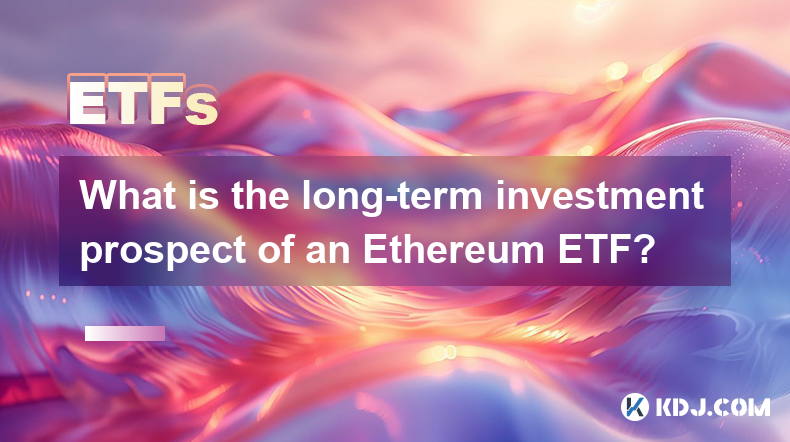
What is the long-term investment prospect of an Ethereum ETF?
Mar 18,2025 at 03:01pm
Key Points:Uncertainty surrounds the long-term prospects of an Ethereum ETF due to regulatory hurdles and market volatility.Approval hinges on regulatory clarity regarding cryptocurrencies, especially concerning investor protection and market manipulation.Successful ETF launches could boost Ethereum's price and adoption, but failure could negatively imp...
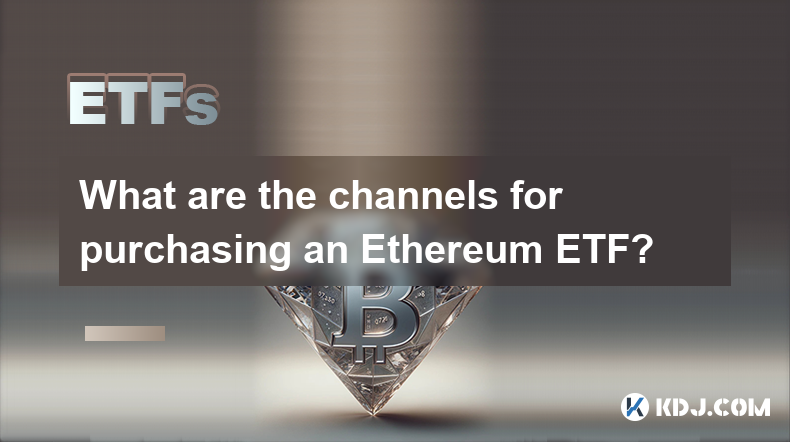
What are the channels for purchasing an Ethereum ETF?
Mar 18,2025 at 01:49am
Key Points:Currently, there are no Ethereum ETFs available for direct purchase by the general public in most major markets.Access to Ethereum exposure through ETFs is limited, mainly through futures-based ETFs.Purchasing Ethereum directly or through other investment vehicles remains a viable alternative.Regulatory hurdles and market complexities signifi...
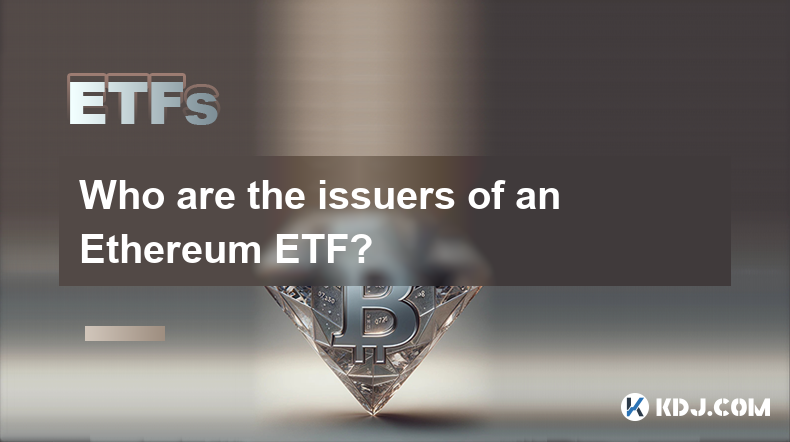
Who are the issuers of an Ethereum ETF?
Mar 19,2025 at 08:07pm
Key Points:There are no currently approved Ethereum ETFs in the US, meaning no single issuer can be definitively named. However, several firms have filed applications.The issuers of potential Ethereum ETFs will be large, established financial institutions, typically asset management companies.The specific requirements for ETF issuers are stringent and o...

How is an Ethereum ETF different from a Bitcoin ETF?
Mar 17,2025 at 10:55am
Key Points:Underlying Asset: The core difference lies in the underlying asset: an Ethereum ETF tracks the price of Ether (ETH), while a Bitcoin ETF tracks the price of Bitcoin (BTC).Technology and Use Cases: Ethereum's blockchain supports smart contracts and decentralized applications (dApps), creating a distinct technological and investment narrative c...
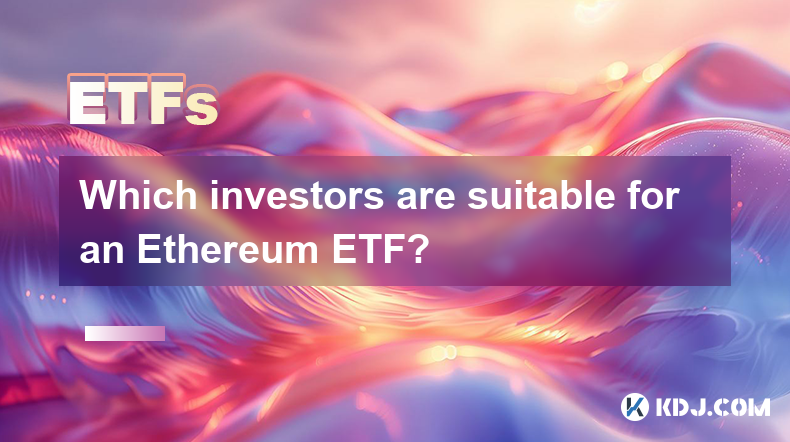
Which investors are suitable for an Ethereum ETF?
Mar 16,2025 at 05:50pm
Key Points:Risk Tolerance: Ethereum ETF investment requires a high risk tolerance due to the volatility of the cryptocurrency market.Investment Goals: Investors seeking long-term growth potential and exposure to the Ethereum ecosystem are suitable candidates.Investment Horizon: A longer-term investment horizon is crucial to weather market fluctuations.U...
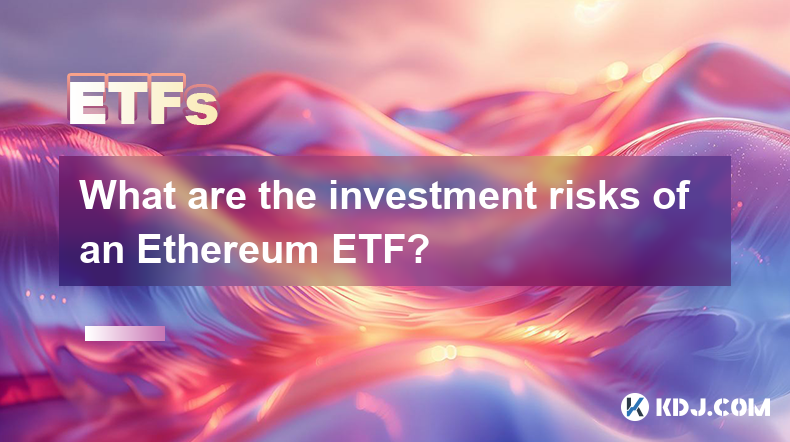
What are the investment risks of an Ethereum ETF?
Mar 18,2025 at 02:12am
Key Points:Price Volatility: Ethereum's price is highly volatile, impacting ETF share prices.Regulatory Uncertainty: Changes in regulatory landscapes can significantly affect ETF trading and performance.Market Manipulation: The potential for market manipulation, particularly in smaller ETFs, exists.Underlying Asset Risk: Risks associated with the Ethere...

What is the long-term investment prospect of an Ethereum ETF?
Mar 18,2025 at 03:01pm
Key Points:Uncertainty surrounds the long-term prospects of an Ethereum ETF due to regulatory hurdles and market volatility.Approval hinges on regulatory clarity regarding cryptocurrencies, especially concerning investor protection and market manipulation.Successful ETF launches could boost Ethereum's price and adoption, but failure could negatively imp...

What are the channels for purchasing an Ethereum ETF?
Mar 18,2025 at 01:49am
Key Points:Currently, there are no Ethereum ETFs available for direct purchase by the general public in most major markets.Access to Ethereum exposure through ETFs is limited, mainly through futures-based ETFs.Purchasing Ethereum directly or through other investment vehicles remains a viable alternative.Regulatory hurdles and market complexities signifi...

Who are the issuers of an Ethereum ETF?
Mar 19,2025 at 08:07pm
Key Points:There are no currently approved Ethereum ETFs in the US, meaning no single issuer can be definitively named. However, several firms have filed applications.The issuers of potential Ethereum ETFs will be large, established financial institutions, typically asset management companies.The specific requirements for ETF issuers are stringent and o...

How is an Ethereum ETF different from a Bitcoin ETF?
Mar 17,2025 at 10:55am
Key Points:Underlying Asset: The core difference lies in the underlying asset: an Ethereum ETF tracks the price of Ether (ETH), while a Bitcoin ETF tracks the price of Bitcoin (BTC).Technology and Use Cases: Ethereum's blockchain supports smart contracts and decentralized applications (dApps), creating a distinct technological and investment narrative c...

Which investors are suitable for an Ethereum ETF?
Mar 16,2025 at 05:50pm
Key Points:Risk Tolerance: Ethereum ETF investment requires a high risk tolerance due to the volatility of the cryptocurrency market.Investment Goals: Investors seeking long-term growth potential and exposure to the Ethereum ecosystem are suitable candidates.Investment Horizon: A longer-term investment horizon is crucial to weather market fluctuations.U...

What are the investment risks of an Ethereum ETF?
Mar 18,2025 at 02:12am
Key Points:Price Volatility: Ethereum's price is highly volatile, impacting ETF share prices.Regulatory Uncertainty: Changes in regulatory landscapes can significantly affect ETF trading and performance.Market Manipulation: The potential for market manipulation, particularly in smaller ETFs, exists.Underlying Asset Risk: Risks associated with the Ethere...
See all articles






















































































